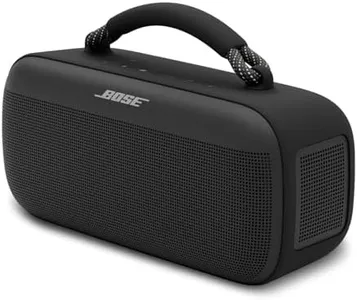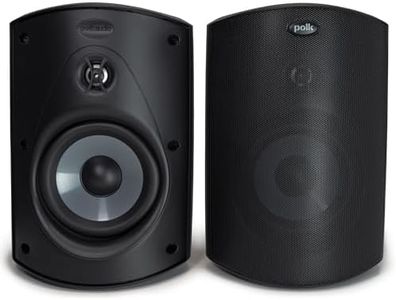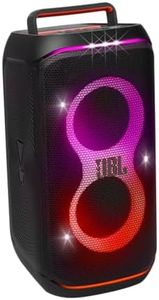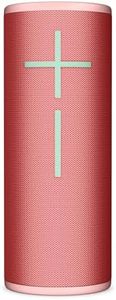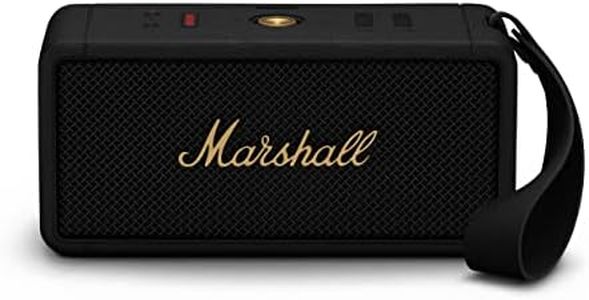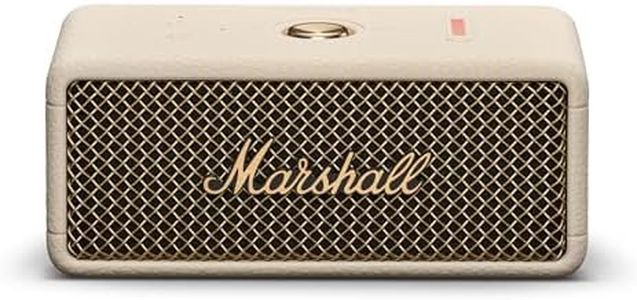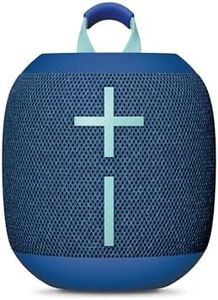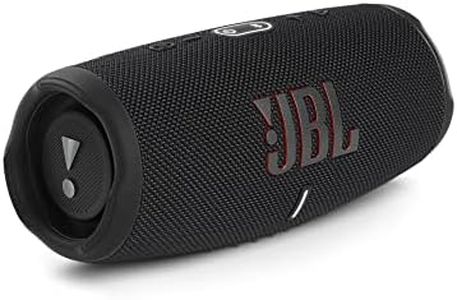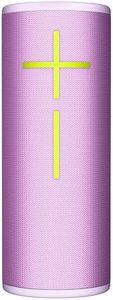We Use CookiesWe use cookies to enhance the security, performance,
functionality and for analytical and promotional activities. By continuing to browse this site you
are agreeing to our privacy policy
10 Best Wireless Outdoor Speakers
From leading brands and best sellers available on the web.Buying Guide for the Best Wireless Outdoor Speakers
Choosing the right wireless outdoor speakers can greatly enhance your outdoor gatherings, relaxation, or events by delivering music and sounds without the hassle of wires. It's essential to focus on features that make the speakers suited for outdoor environments while also matching your usage habits, preferred sound quality, and ease of use. Understanding the key specifications will help you find speakers that work best for your space and needs.Weather Resistance (IP Rating)Weather resistance is a measure of how well the speaker can withstand exposure to elements like rain, dust, and sun. This is usually shown with an IP (Ingress Protection) rating, such as IPX4 or IP67, where higher numbers indicate better protection. IPX4 means splash resistant, suitable for covered patios, while IP67 is fully waterproof and dustproof, ideal for open areas. You should think about how exposed your speakers will be—if they’ll be in a sheltered space, a lower rating is fine, but for full exposure, go for higher ratings.
Battery LifeBattery life tells you how long the speaker can play music on a single charge. Outdoor speakers often have battery lives ranging from a few hours to more than 20 hours. If you host long events or want to avoid frequent recharging, look for a speaker with longer battery life. For short use, like a dinner or brief outdoor gathering, a lower battery life might suffice.
Sound Output (Wattage/Driver Size)Sound output refers to how loud and clear the speaker can get, often measured in watts or by the size of its drivers (the part that makes sound). Speakers with higher wattage or larger drivers generally produce louder volumes and deeper bass. If you have a large outdoor area or plan big gatherings, a higher sound output is beneficial. For smaller patios or quiet background music, moderate output will do the job.
Wireless RangeWireless range indicates how far your speaker can be from its music source (like a phone or tablet) and still stay connected. Typical ranges are between 30 to 100 feet. If you want the freedom to move around or place the speaker far from the music source, look for models with a greater range. For close, fixed setups, range is less critical.
Connectivity (Bluetooth/Wi-Fi)This spec tells you how you connect your speaker to your devices. Bluetooth is very common for quick, direct links to phones or tablets, while Wi-Fi allows for longer range and sometimes multi-room features, letting you connect multiple speakers together. If you want easy portable use, Bluetooth is simple; if you desire stable connections or want to play music throughout different areas at once, Wi-Fi may be better.
Portability and Mounting OptionsPortability refers to how easy it is to move the speaker. Some are lightweight and have handles, while others are designed to be mounted on a wall or fixed somewhere. Choose a lightweight and portable model if you want flexibility in placement or plan to take the speaker to different locations. For a dedicated spot, consider a speaker with mounting options.
Stereo Pairing and Multi-Speaker SupportStereo pairing lets you link two of the same speakers for true left and right sound, which can improve audio quality and create a wider sound area. Multi-speaker support allows connection with more than two speakers for larger spaces. If you're an audio enthusiast or want a surround-sound-like experience, look for these features. For simple, single-speaker use, this is less important.


